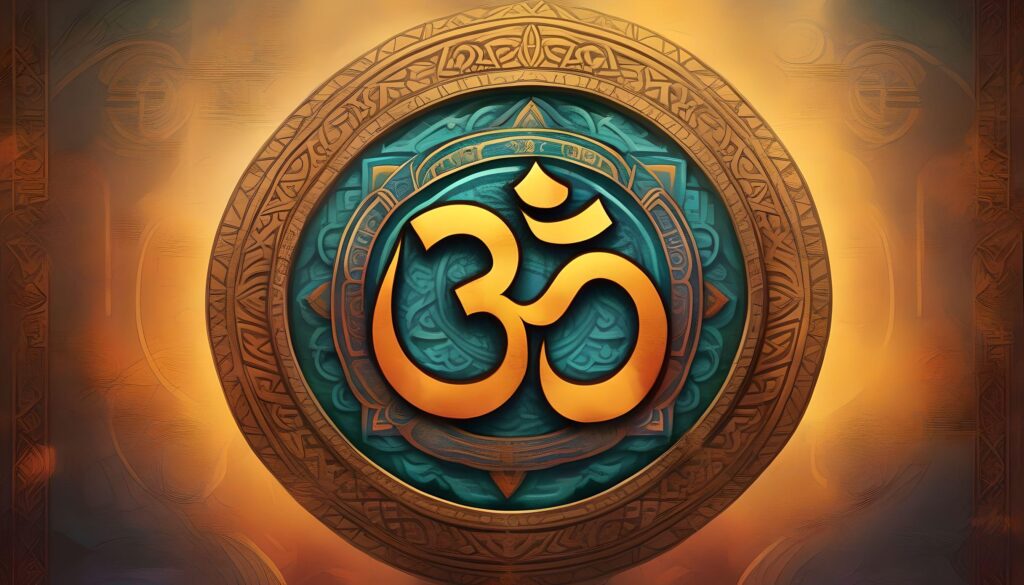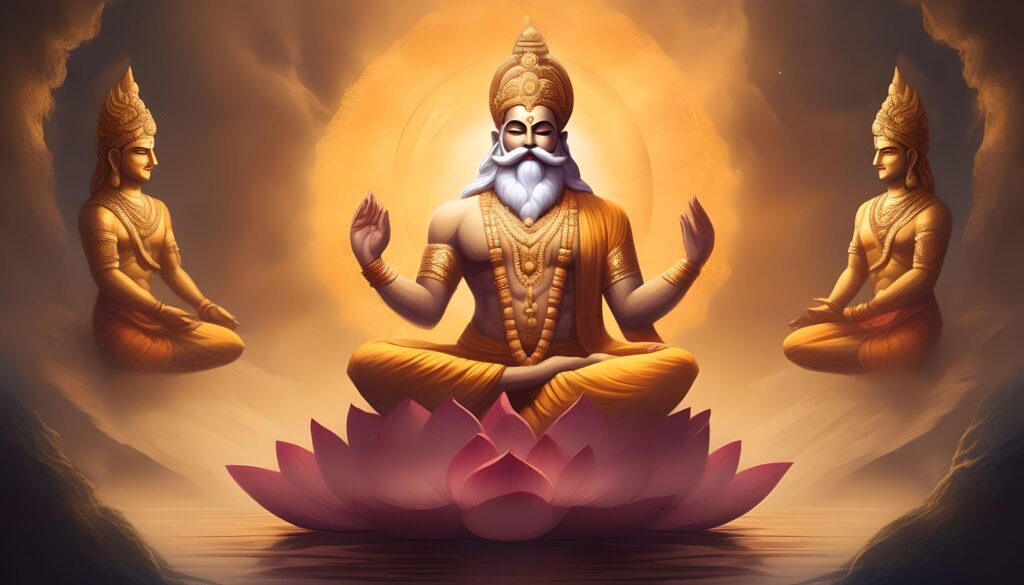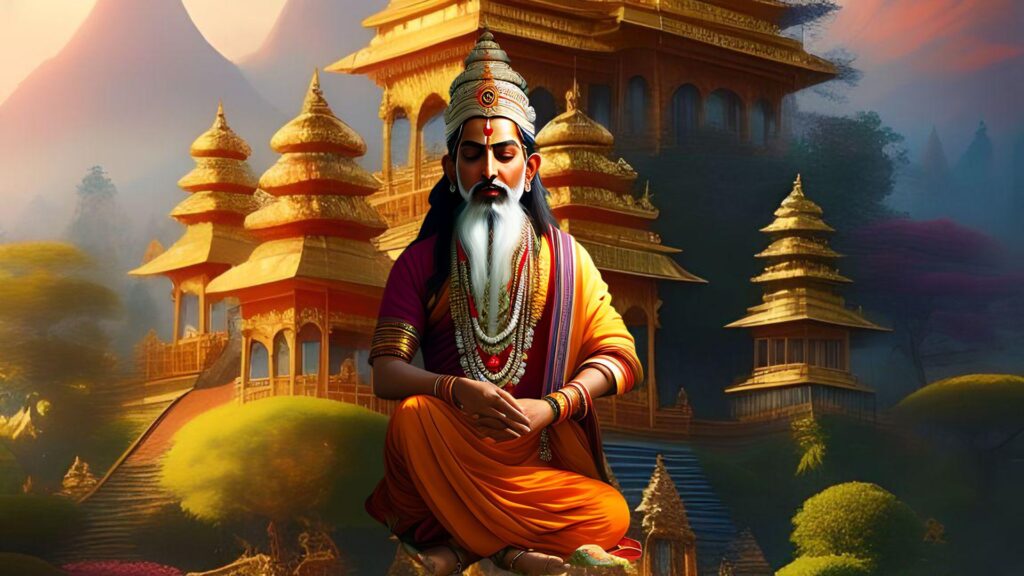Bhagavad Gita: Positive way to Inner Peace (26 Points)
The Bhagavad Gita, commonly known as the Gita, is a highly regarded sacred text containing profound teachings on spirituality, philosophy, and existence. Consisting of principles ingrained in the Indian epic Mahabharata, its teachings persistently engross individuals across the globe. This article aims to provide a comprehensive analysis of the Bhagavad Gita, including an examination of its historical backdrop, fundamental tenets, and its far-reaching implications for various facets of human life.
Introduction
the Bhagavad Gita, an ancient text composed of a dialogue between Lord Krishna and the valiant prince Arjuna. Positioned on the battlefield of Kurukshetra, the narrative confronts Arjuna’s ethical quandary and offers counsel on living a blameless life. In addition to its cultural origins, the Gita elicits a response from those in search of profound insights and direction regarding the intricacies of existence.
Understanding the Philosophy
The fundamental tenet of the Bhagavad Gita is Dharma, which signifies the virtuous way of living one’s existence. It describes a variety of routes to spiritual enlightenment, catering to a wide range of temperaments and predispositions. The teachings of the Gita provide an enduring manual for individuals seeking equilibrium and meaning in a world that is increasingly hectic.
Historical Background
In order to develop a comprehensive understanding of the Bhagavad Gita, it is imperative to explore its historical roots. The Gita, which originated as a component of the Indian epic Mahabharata, has had a profound and enduring impact on the spiritual and cultural milieu of the Indian subcontinent.
Key Themes and Concepts
The obligation to perform one’s duty, Dharma, appears numerous times in the Gita. The text provides detailed explanations of various spiritual paths, including Jnana Yoga (the path of knowledge), Bhakti Yoga (the path of devotion), and Karma Yoga (the path of altruistic action). A comprehensive manual for living a purposeful and meaningful existence is comprised of these themes.
Arjuna’s Dilemma
In the Bhagavad Gita, Arjuna’s moral dilemma on the battlefield is a defining moment. This segment delves into the relatable elements of Arjuna’s hardships, establishing connections to the obstacles that individuals encounter in their personal lives.
Origins and Composition
The Bhagavad Gita is an integral component of the Mahabharata, an ancient Indian epic. The composition of this work is commonly thought to have occurred during the 5th to 3rd centuries BCE; however, certain scholars contend that it was composed as late as the 2nd century BCE. The given text comprises a dialogue between the deity Krishna, who acts as the charioteer of the warrior-prince Arjuna during the Battle of Kurukshetra.
The Context: The Battle of Kurukshetra
The teachings of the Bhagavad Gita are situated against the backdrop of the Battle of Kurukshetra. Arjuna, overcome with despondency and ethical quandaries, encounters his own relatives and close companions on the battlefield. During this critical juncture, he seeks counsel from Krishna, inquiring about matters pertaining to obligation, moral rectitude, and the fundamental essence of existence.
The Teachings of the Bhagavad Gita
The Bhagavad Gita expoundeds upon profound philosophical and spiritual principles, offering counsel on an extensive array of life-related matters. It provides profound understandings of obligations, self-actualization, loyalty, and the essence of being. An essential tenet of the Gita is the significance of carrying out one’s obligations without becoming preoccupied with the results; this concept of altruistic behavior is emphasized.
Central Themes Explored
Dharma: Path of Righteousness
Dharma, which is frequently rendered as “obligation” or “virtuousness,” is an essential concept in the Bhagavad Gita. It examines the notion that each person is endowed with a distinct collection of duties and responsibilities in their lifetime. Dharma-fulfilling individuals make a positive contribution to the equilibrium and harmony of the world.
Yoga: The Path to Self-Realization
The Bhagavad Gita expounded upon a multitude of yoga paths that serve as vehicles for achieving spiritual enlightenment and self-realization. An assortment of yogic practices are examined, including jnana yoga (the path of knowledge), bhakti yoga (the path of devotion), and karma yoga (the path of altruistic action). These routes offer distinct methodologies through which one can establish a connection with the divine and achieve emancipation.
Nature of the Self: Atman and Brahman
The Gita explores the fundamental characteristics of the self, presenting theoretical constructs including Atman (the personal soul) and Brahman (the supreme reality). It teaches that the Atman is interconnected with the universal consciousness and is eternal and divine. Through the attainment of spiritual liberation, individuals can surpass the illusions of the material world by coming to an understanding of their true nature.
The Ultimate Goal: Moksha
In the Bhagavad Gita, moksha, or liberation from the cycle of birth and mortality, is described as the ultimate objective. It is the realization of one’s authentic self and the state of unity with the divine. By adhering to the principles of moksha, selflessness, and spiritual discipline, one can achieve liberation from the cycle of samsara, as stated in the Gita.
Influence and Significance
A profound influence has been exerted by the teachings of the Bhagavad Gita on Hinduism, spirituality, and culture. Its scholarly attention and veneration by adherents of diverse religious and philosophical traditions transcend Hinduism, thereby spreading its influence. Those in pursuit of spiritual enlightenment and duty have found solace in the Gita’s doctrines regarding the essence of the self, self-actualization, and duty.
The Gita in Daily Life
Beyond theoretical comprehension, the Gita promotes the integration of practical implementation into one’s everyday existence. This segment of the article delves into the ways in which individuals can incorporate its teachings to foster personal development and enhance their overall state of being.
Wisdom for Decision-Making
The Bhagavad Gita offers significant perspectives on the process of making decisions. Through an analysis of Arjuna’s decisions, readers are able to discern lessons that can inform their own decision-making processes and assist them in traversing the intricacies of life.
Impact on Leadership
Valuable are the leadership teachings that can be extracted from the Bhagavad Gita. This segment delves into the effective leadership principles that are intrinsic in the Gita and examines their practical implementation across diverse domains, such as organizations and business.
Cultural Impact
Beyond India, the Bhagavad Gita is of tremendous cultural significance. Since ancient times, this epic Hindu scripture, which can be found in the Mahabharata, has shaped and influenced Indian spirituality, culture, and philosophy. This article aims to investigate the profound cultural influence of the Bhagavad Gita through an analysis of its teachings, values, and societal ramifications.
The Role of Religion in Hindu Culture
The Bhagavad Gita assumes a pivotal position within Hindu culture as it imparts essential religious principles that manifest in the daily lives of its adherents. The significance of religious ideals, including altruistic behavior, devotion to divine entities, and meditation, is underscored in the scripture. These principles serve as the bedrock of Hindu religious observances and are profoundly integrated into the cultural tapestry of Indian society.
Ethical and Philosophical Significance
An essential element of the Bhagavad Gita consists of its investigation into philosophical and ethical issues. The scripture explores profound subjects including the pursuit of self-realization, the meaning of life, and the very nature of existence. The Bhagavad Gita provides guidance on ethical decision-making and offers insights into moral dilemmas via the dialogues between Arjuna and Krishna.
The Concept of Non-Attachment
The Bhagavad Gita places significant emphasis on the doctrine of non-attachment. Scripture emphasizes the significance of carrying out one’s responsibilities without becoming preoccupied with the results. This doctrine promotes altruistic behavior, wherein individuals refrain from pursuing personal benefit or being influenced by desires. It is believed that non-attachment serves as a means to attain liberation and spiritual development.
Influence on Indian Literature and Arts
The influence of the Bhagavad Gita on Indian literature and the arts has been profound. Throughout history, its teachings have motivated innumerable poets, writers, and artists. A multitude of literary compositions in diverse Indian languages are motivated by the ethical principles and philosophical concepts expounded in the scripture. The visual arts, music, and classical Indian dance are all impacted by the Gita.
Impact on Indian Philosophy
Indian philosophy has been profoundly influenced by the Bhagavad Gita. Numerous philosophical institutions and thinkers, such as Vedanta and Yoga, have been impacted by it. Insights into metaphysical concepts, the essence of the self, and the individual’s relationship with the divine are found in the scripture. The development of philosophical systems that investigate the nature of reality and the quest for spiritual enlightenment has been aided by its teachings.
Social and Moral Values
A set of social and moral values advocated in the Bhagavad Gita has had an enduring effect on Indian society. It places significant emphasis on the virtues of duty, righteousness, and compassion. These values establish the foundation for moral conduct and societal cohesion. The Gita’s teachings have shaped the moral fabric of Indian communities and exerted a significant influence on interpersonal relationships.
Yoga and Meditation in the Gita
The Gita contains an abundance of knowledge regarding yoga and meditation. Through realizing the correlation between these practices and spiritual development, people have the ability to improve their holistic state of being.
Global Reception
The eminent teachings of the Bhagavad Gita have garnered international acclaim and adulation, surpassing cultural and geographical limitations. Critically acclaimed by philosophers, spiritual aspirants, and scholars worldwide, the work has been translated into an extensive number of languages.
Contemporary Relevance
The Bhagavad Gita remains a seminal text that continues to provide guidance and inspiration, even in the present day. The principles it espouses regarding self-control, ethical quandaries, and the quest for spiritual enlightenment find resonance among individuals grappling with the intricacies of contemporary existence.
Conclusion
Spiritual and philosophical in nature, the Bhagavad Gita provides profound insights into the meaning of existence, responsibility, and self-actualization. On their spiritual journeys, its teachings on righteousness, altruism, and the way to liberation continue to motivate and direct others. The Bhagavad Gita, a revered sacred text, functions as a beacon of counsel and direction for individuals in pursuit of enlightenment and significance amidst a perpetually evolving world.
Frequently Asked Questions (FAQs)
- Is the Bhagavad Gita only relevant to Hinduism?
- No, the Bhagavad Gita’s teachings have universal applicability and resonate with people of various faiths and backgrounds.
- Can the Gita be applied in modern-day decision-making?
- Absolutely, the Gita provides valuable principles for decision-making that are applicable in contemporary contexts.
- Are there different interpretations of the Bhagavad Gita?
- Yes, scholars have offered diverse interpretations over the centuries, leading to a rich tapestry of understanding.
- How can one incorporate the Gita’s teachings in daily life?
- By understanding and applying its principles, individuals can find guidance for personal growth, ethical living, and well-being.
- Is the Bhagavad Gita still relevant in today’s fast-paced world?
- Yes, the Gita’s timeless wisdom remains relevant, offering insights for








